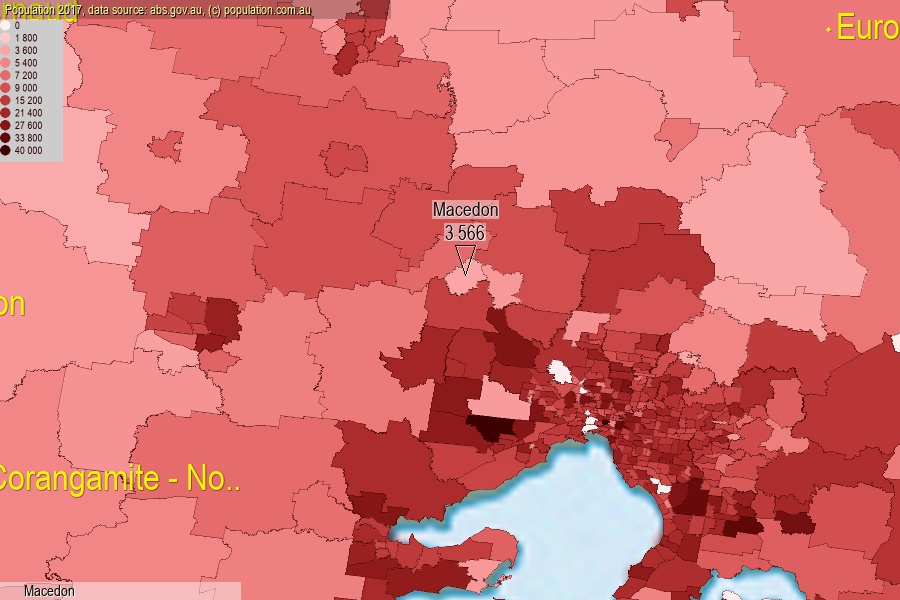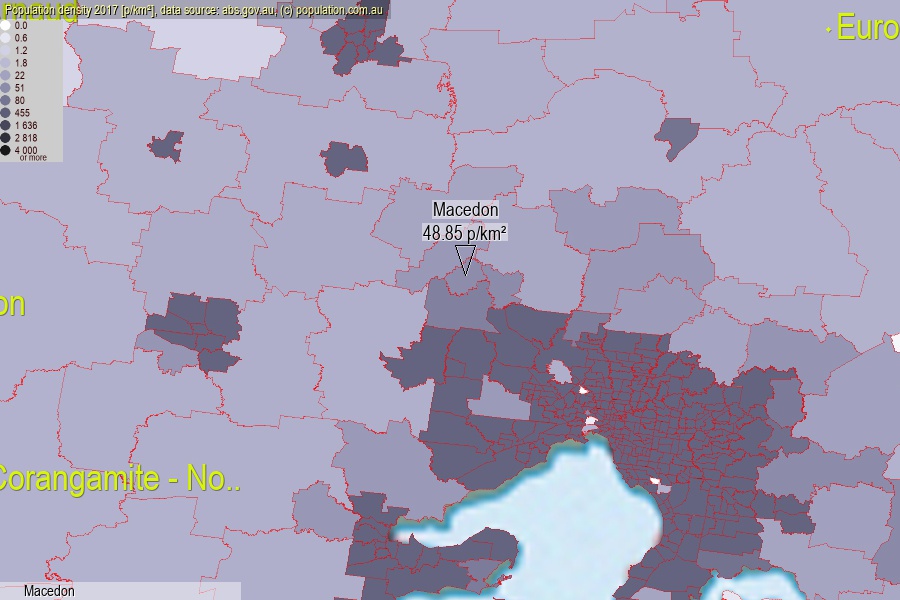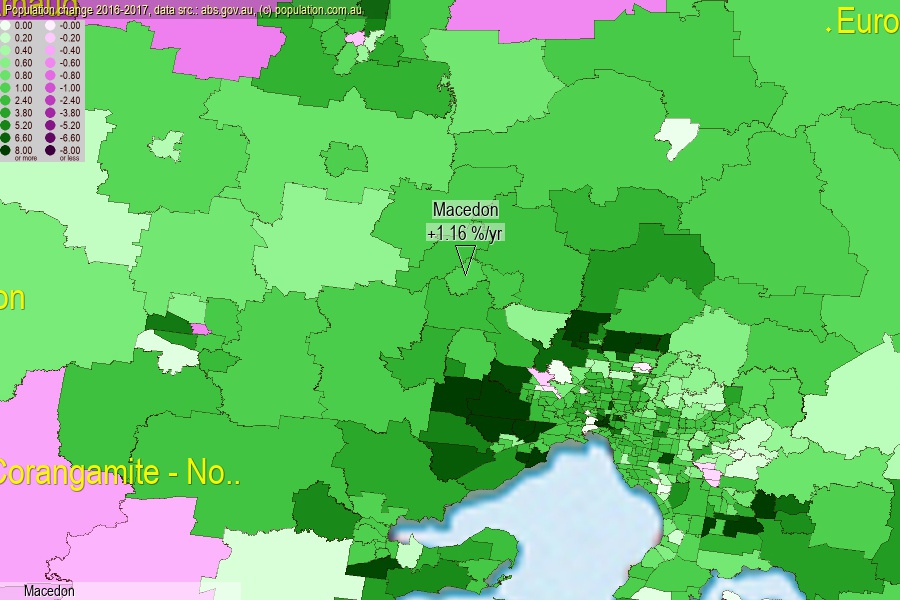 population.com.au
population.com.auLast official estimated population of Macedon (as Statistical Area Level 2) was 3 566 people (on 2017-06-30)[2]. This was 0.01% of total Australian population and 0.055% of VIC population. Area of Macedon is 73.00 km², in this year population density was 48.85 p/km² . If population growth rate would be same as in period 2016-2017 (+1.16%/yr), Macedon population in 2025 would be 3 912. [0]



Click to enlarge. Macedon is located in the center of the images.
Population [people], population density [p./km²] and population change [%/year] [2]
View borders » (new window) [4]
[1991-1992] +1.03 %/Yr.
[1992-1993] +0.54 %/Yr.
[1993-1994] +0.06 %/Yr.
[1994-1995] +0.36 %/Yr.
[1995-1996] +1.19 %/Yr.
[1996-1997] +0.94 %/Yr.
[1997-1998] +0.67 %/Yr.
[1998-1999] +0.35 %/Yr.
[1999-2000] +0.58 %/Yr.
[2000-2001] +0.89 %/Yr.
[2001-2002] -0.48 %/Yr.
[2002-2003] -0.77 %/Yr.
[2003-2004] +0.06 %/Yr.
[2004-2005] -0.63 %/Yr.
[2005-2006] +0.20 %/Yr.
[2006-2007] -0.78 %/Yr.
[2007-2008] -1.19 %/Yr.
[2008-2009] -0.50 %/Yr.
[2009-2010] -1.33 %/Yr.
[2010-2011] -0.63 %/Yr.
[2011-2012] +1.39 %/Yr.
[2012-2013] +1.19 %/Yr.
[2013-2014] +1.44 %/Yr.
[2014-2015] +0.96 %/Yr.
[2015-2016] +1.41 %/Yr.
[2016-2017] +1.16 %/Yr.
[0] Calculated with linear interpolation from officially estimated population
[1] Read more about SA2 and Australian Statistical Geography Standard (ASGS) on abs.gov.au
[2] Population data from Australian Bureau of Statistics (Population and density: 2017; change: 2016-2017)
[3] Digital Boundaries: Australian Statistical Geography Standard (ASGS) 2016.
[4] Border coordinates are simplifyed using Ramer-Douglas-Peucker algorithm.